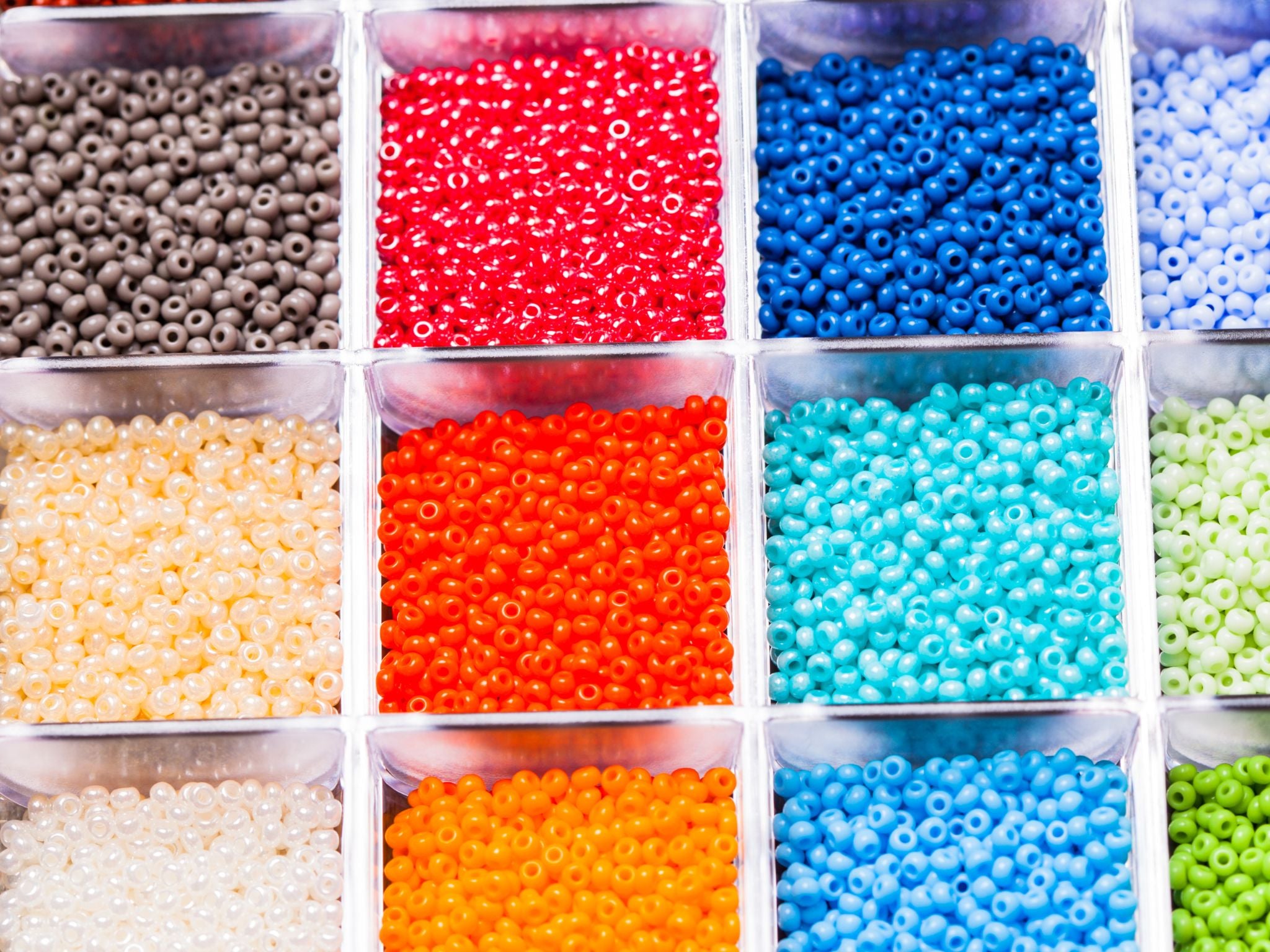Today, I'm diving into the fascinating world of peyote beading techniques. Peyote stitch is a popular and versatile beading method that allows you to create intricate and beautiful designs. So, let's explore the different types of peyote stitch and what makes each one unique!
-
Even Count Peyote: Even Count Peyote is a classic and widely used technique. It involves an even number of beads in each row, making it perfect for creating symmetrical patterns and flat surfaces. The rows are stitched back and forth, creating a smooth and balanced beadwork.
-
Odd Count Peyote: Unlike Even Count Peyote, Odd Count Peyote involves an odd number of beads in each row. This technique is ideal for projects that require a specific number of beads or when transitioning from an even count to an odd count pattern. While it might be a bit trickier, the results are worth it!
-
Tubular Peyote: Tubular Peyote is a delightful technique used to create cylindrical or tubular shapes. It's perfect for making beaded ropes, bracelets, and necklaces. The rows are stitched in a continuous loop, resulting in a seamless and elegant finish.
-
Circular Peyote: Circular Peyote, also known as Round Peyote, is excellent for creating stunning beaded mandalas and circular designs. The rows are stitched in a circular manner, expanding outward from the center. It's a fantastic technique to add a touch of mesmerizing symmetry to your beadwork.
-
Peyote with a Twist: Peyote with a Twist is a creative variation of the traditional peyote stitch. By adding a twist to the bead placement, you create a fascinating spiral effect. This technique adds depth and dimension to your beadwork, making it a popular choice for unique jewelry pieces.
-
2-Drop Peyote: In 2-Drop Peyote, two beads are added at a time instead of one, making it a quicker method to cover larger areas. It's perfect for projects that require a bolder and more textured look, giving your beadwork a distinctive flair.
-
3-Drop Peyote: Similar to 2-Drop Peyote, 3-Drop Peyote speeds up the process even more by adding three beads at a time. It's a fantastic technique to experiment with and achieve intricate designs in a shorter amount of time.
-
Diagonal Peyote: Diagonal Peyote is a fun and versatile technique where the rows are stitched diagonally instead of horizontally or vertically. This creates a striking geometric effect, allowing you to experiment with various angles and patterns.
-
Gourd Peyote: Gourd Peyote is a unique variation where the beadwork takes on a curvaceous shape resembling a gourd or pumpkin. By increasing and decreasing the number of beads in each row, you can achieve this delightful 3D effect.
-
Ruffle Peyote: Ruffle Peyote adds a touch of elegance and frill to your beadwork. By stacking multiple beads in a single stitch, you create a ruffled appearance, perfect for adding texture and dimension to your designs.
-
Triangle Peyote: Triangle Peyote is all about creating beaded triangles in your designs. By strategically increasing and decreasing the number of beads in each row, you can form various triangular patterns, adding a captivating geometric element to your beadwork.
-
Netting Peyote: Netting Peyote is a combination of peyote stitch and netting techniques. It involves adding connecting beads between the peyote rows, resulting in a net-like structure. This technique is fantastic for creating airy and open beadwork with a touch of intricacy.
-
Picot Peyote: Picot Peyote allows you to add tiny loops or picots to your beadwork, creating delicate and decorative edges. These picots give your designs a whimsical touch, making them perfect for adding accents to bracelets, earrings, or pendants.
-
Oglala Peyote: Oglala Peyote is a traditional Native American beading technique that incorporates peyote stitch with a distinct twist. This technique is known for its beautiful and intricate beadwork, often used in creating ceremonial regalia and cultural art.
-
Raised Peyote: In Raised Peyote, you can elevate certain beads to create a textured and dimensional effect. By adding additional stitches around specific beads, you bring them to the forefront of your design, giving your beadwork an eye-catching 3D appearance.
Each peyote variation adds its own flair and charm to your beadwork, allowing you to explore endless creative possibilities. So, don't hesitate to experiment and play with these techniques to make your beadwork truly extraordinary!

